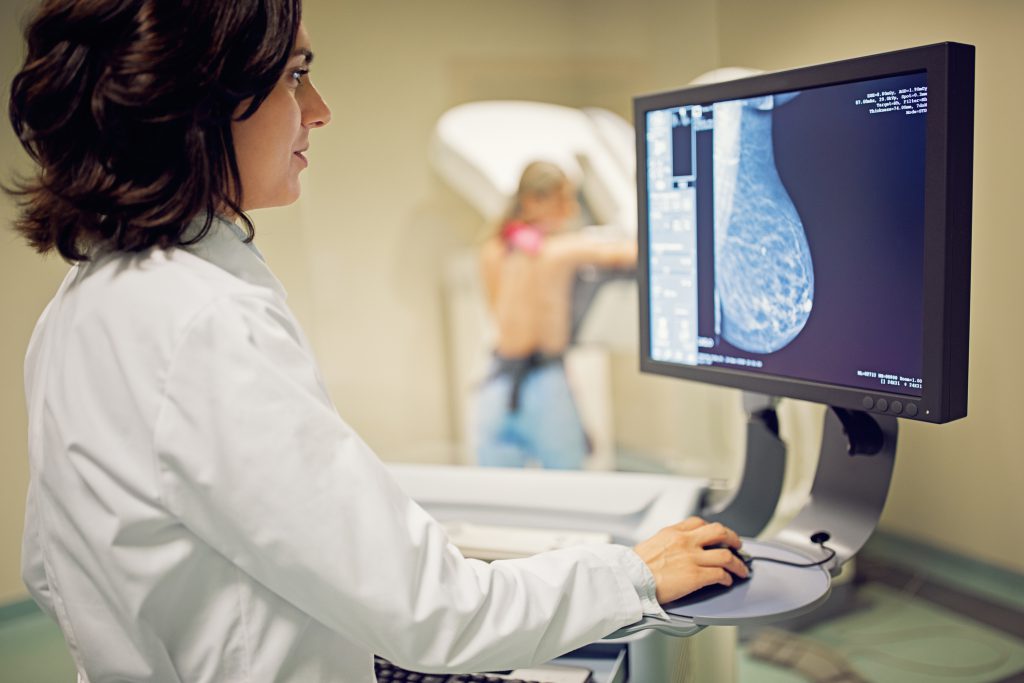All cancers gets their name from the part of the body where the abnormal cells begin to develop. Breast cancer occurs when cells become abnormal and divide without order in the breast tissue of women, and in rare cases, men.

While it is not known what causes breast cancer, certain risk factors have been linked to the disease. A risk factor is anything that increases a person’s chance of getting a particular type of cancer. Some risk factors can be controlled (e.g., smoking) and others (e.g.,age, family history) cannot be changed. Being a woman is the main risk factor for breast cancer however, other factors such as environmental exposure and diet can also play a part.
The most common sign of breast cancer is a new lump in the breast that is painless, hard, and has irregular edges.
Some other signs or symptoms of breast cancer include:
• swelling of a part of the breast
• skin irritation or dimpling of the skin on the breast
• nipple pain or scaliness of the nipple or breast skin
• a nipple discharge that is other than breast milk
• a lump in the underarm area
At this time, there is no known way to prevent breast cancer. However, some preventative measures such as reducing controllable risk factors and implementing early detection methods can increase your survival rate in the event of a cancer diagnoses. Reducing your incidence of risk where possible and following guidelines for self-examination and early detection are the best course of preventative action. Early detection improves the likelihood of successful treatment and saves thousands of lives each year. Each month, it is advised that women perform breast self-exams. Early detection screening exams often find cancers before they start to cause symptoms, while they are small and still confined to the breast. Between the ages of 20 and 39, women should have a clinical breast exam every year if they are in a high-risk group or every three years if they are not. From the age of 40, women should have a mammogram screening every year.
If breast cancer is suspected in a patient, a biopsy of the cells from the breast is performed, removing cells so that they can be examined. Cancer treatment includes surgical procedures such as lumpectomy, mastectomy, and non-surgical therapies such as chemotherapy, radiation therapy, and hormone therapy. If you have been given a cancer diagnosis, don’t be afraid to seek the second opinion of a breast cancer specialist for more information and treatment options.
All content of this newsletter is intended for general information purposes only and is not intended or implied to be a substitute for professional medical advice, diagnosis or treatment. Please consult a medical professional before adopting any of the suggestions on this page. You must never disregard professional medical advice or delay seeking medical treatment based upon any content of this newsletter. PROMPTLY CONSULT YOUR PHYSICIAN OR CALL 911 IF YOU BELIEVE YOU HAVE A MEDICAL EMERGENCY.
